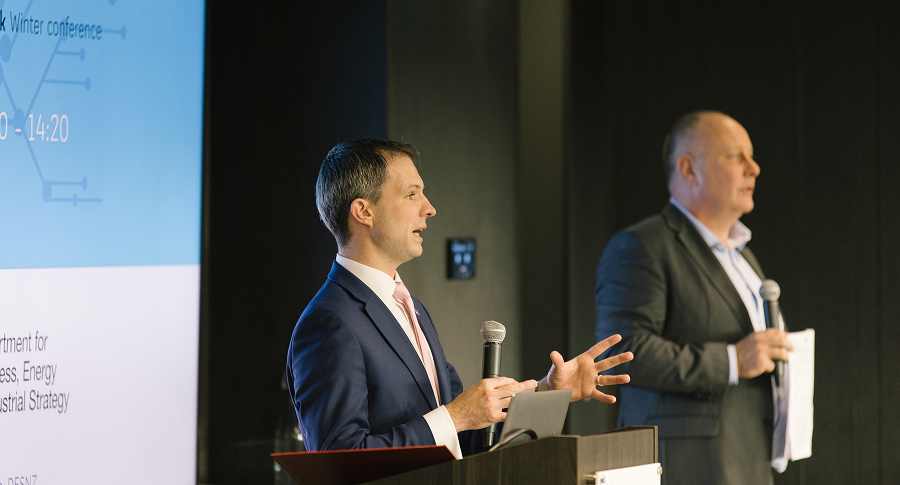Our summer intern from this year, Ovais Kashif, shares his learnings from the dispatch model he worked on during his time at Regen.

Our summer intern from this year, Ovais Kashif, shares his learnings from the dispatch model he worked on during his time at Regen.

Over the summer, I had the opportunity to develop Regen’s dispatch model – a high-level representation of the GB energy system that evaluates how different technologies will contribute to a decarbonised energy supply. The model provides a framework to chart out scenarios for the generation, demand and storage mix in the UK, enabling the interrogation of policies for meeting emissions and security targets. The project builds on Regen’s ‘Go West!’ report, which sought to understand how diversifying the UK’s offshore wind fleet could promote more reliable generation and reduce curtailment. In this blog, I explain the importance of dispatch modelling and highlight some interesting results that emerged during the project.
The energy system is complex. Systems we use to transport energy have been in constant flux since the 19th century, combining engineering and economics to produce an intricate network that, ideally, remains invisible to the people who rely on it. The energy transition now requires that system to be reformed to facilitate the uptake of more renewable energy. To ensure we’re crafting the right policies to make the energy transition happen, we need tools to understand the complexity of the system, and models such as these play a vital role in representing parts of the whole.
The dispatch model attempts to represent the decision-making process of the electricity system operator (ESO). Throughout the year, the ESO balances demandand generation to ensure electricity is produced, consumed and stored in real-time. By requesting that participants increase or decrease the amount of energy available on the network, the ESO influences where our electricity comes from, its cost and its carbon intensity. Decisions on which technologies are called on are broadly meritocratic, where the ‘merit order’ is defined by the cost and carbon emissions of producing a unit of energy. The ESO then ranks each generator and storage unit on the network. Any constraints to the decision making are accounted for, and the cheapest and cleanest assets are chosen tomeet our energy needs. By modelling these actions, we understand which technologies our infrastructure is facilitating and where development is required to achieve net zero targets.
The result of the project was a flexible model that adds to Regen's arsenal of analytical tools. Using the model, Regen could look to answer questions such as:
I used the dispatch model to assess the impact of transmission constraints on a hypothetical, distributed 2035 offshore wind fleet, as assessed in Regen's 'Go West!' study. I found that, if current transmission constraints persisted, it would prevent the utilisation of a significant amount of cheaper offshore wind, particularly due to transmission constraint across the B6 boundary to Scotland. These results highlight the overarching message for the project – to reach net zero, we must understand how the energy system needs to change.

As with most analyses, there are assumptions and limitations to the modelling process, the most prominent of which has already been stated: that dispatch modelling represents just one perspective of our energy system. While the decisions taken at the point of delivery are crucial, the reality is that they account for a fraction of the total energy consumed in the country. Parties contract energy through the network to meet specified loads in private agreements, which are traded days or even years ahead of delivery. This means that, while the model is effective at demonstrating real-time system adjustments, which in the GB market is achieved through the Balancing Mechanism, it cannot be used to represent the intricacies of the entire market.
To ensure we're crafting appropriate policies to accelerate the transition to a net zero energy system, we need ways to understand how we currently supply energy, and how this might change in the future. Models such as the one discussed here play a vital part in representing elements of the energy system and broaden how we think about the built environment. Working on the model has given me a greater appreciation for the intricacy of these 'invisible' systems, and I'm looking forward to diving deeper into this field.
Three months ago, I began a masters in energy data analytics at UCL to further understand our multifaceted energy system. In comparing the different lenses through which we evaluate the electricity network, I've learned how dispatch modelling represents an economist's perspective, juxtaposing the pure technological and environmental analyses seen elsewhere. This difference in perspective is what leads to the various opinions on how best to ready the network for net zero – an example being the debate on the merits of locational marginal pricing arising from the Review of Electricity Markets (REMA) process.
The algorithm used in the dispatch model is built on the economic assumption of welfare maximisation, with the network seeking to minimise the cost of production while meeting demand requirements. This optimisation process is reflected in the newly launched Enduring Auction Capability, allowing the network operator to procure flexibility services as more complex, co-optimised bids. The result? A significant reduction in the cost of energy for the system.
Looking back, I can say with confidence that my time at Regen has been a great launching point as I build my experience in commercial energy analytics through my masters. The course provides a thorough review of applying machine learning and economic modelling to the energy system, going beyond the electricity network to include buildings, transport, and the power markets. I'm excited to complete the remainder of my degree and my dissertation, where I hope to further explore the importance of flexibility to the wider energy system. If you or your company would like to collaborate in this area then do get in touch via my LinkedIn.
Sign up to receive our monthly newsletter containing industry insights, our latest research and upcoming events.